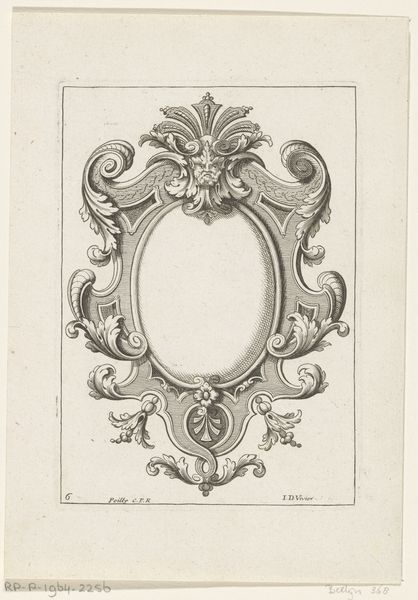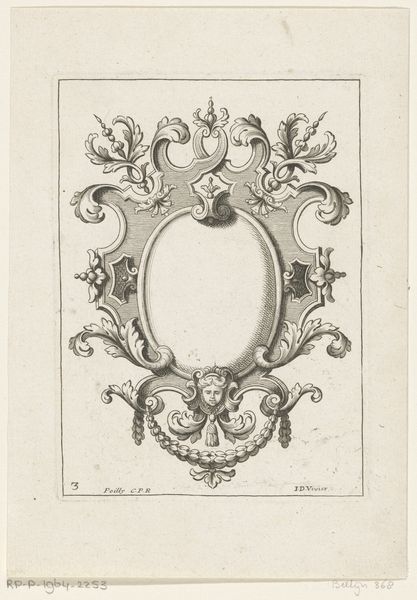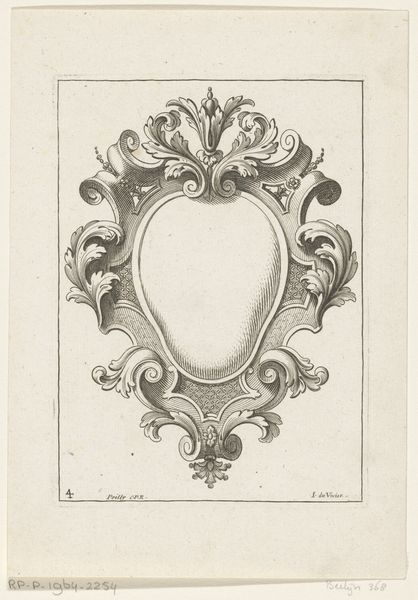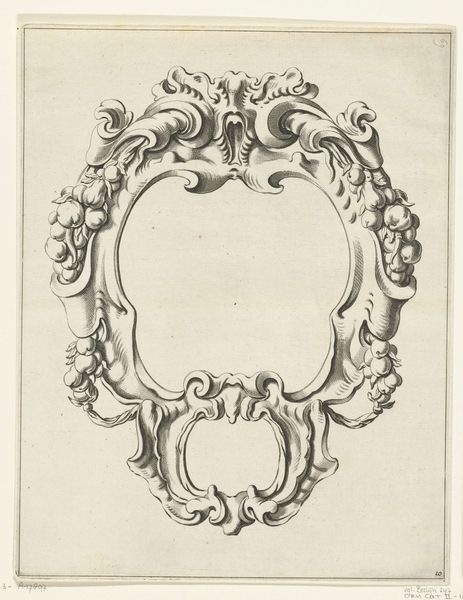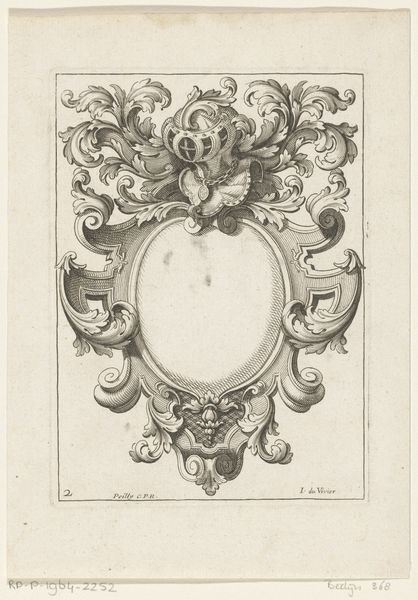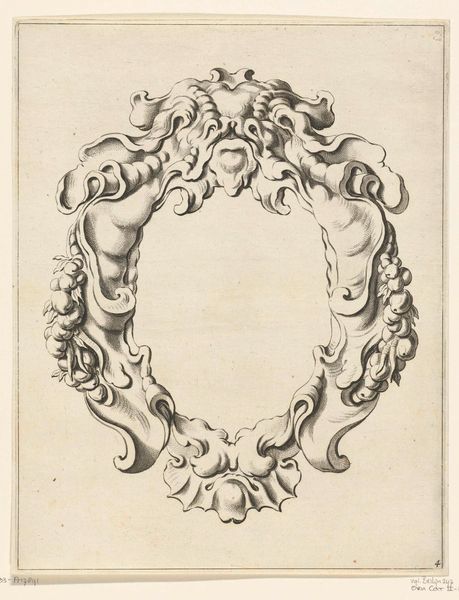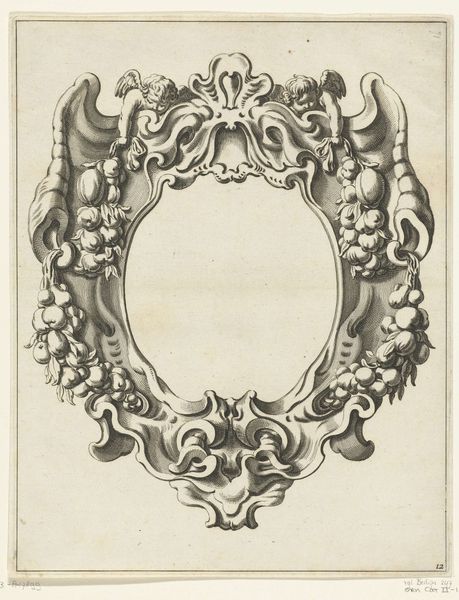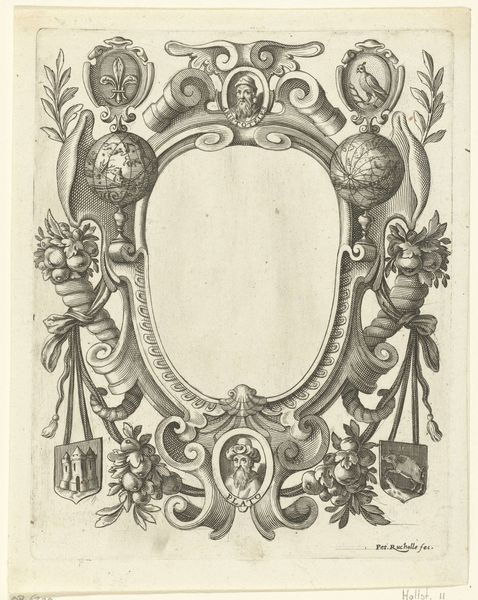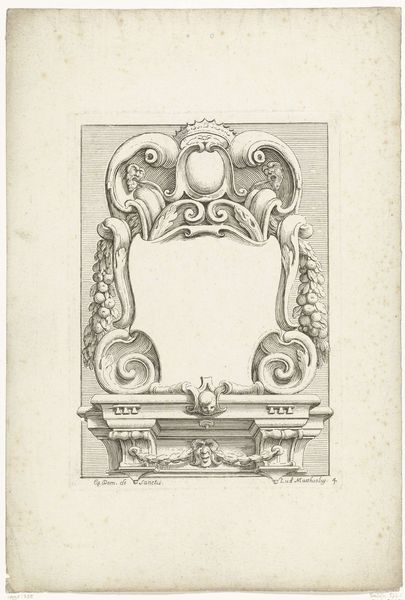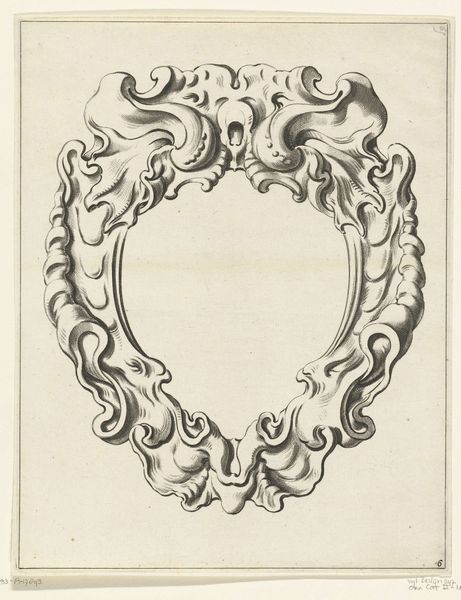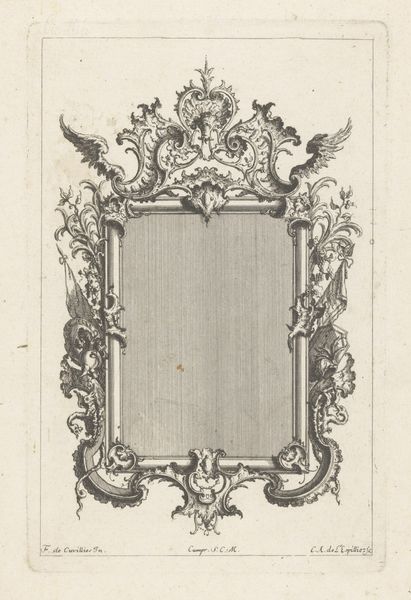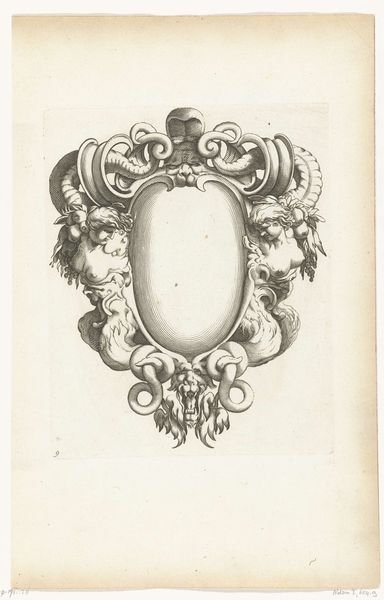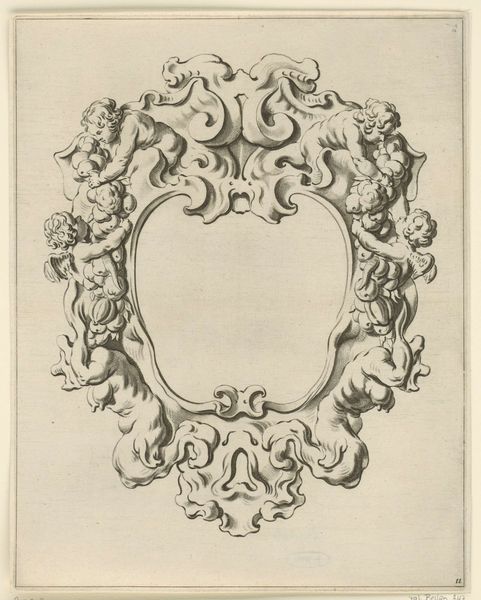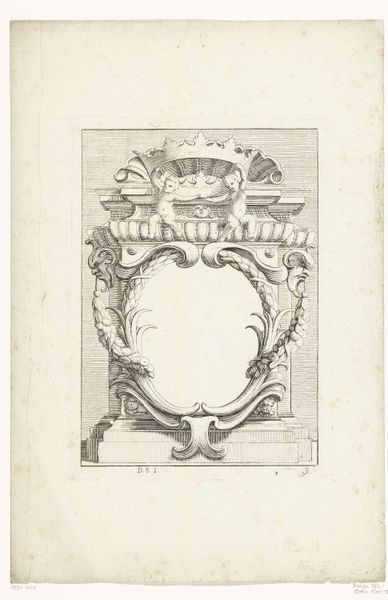
drawing, print, engraving
#
drawing
#
baroque
#
pen drawing
# print
#
form
#
line
#
decorative-art
#
engraving
Dimensions: height 147 mm, width 108 mm
Copyright: Rijks Museum: Open Domain
Editor: Here we have "Crowned Cartouche" from 1712, made by Jean Duvivier, it's an engraving and a pen drawing. There's such detail, the lines are incredibly fine. It feels like a design for something grand, almost theatrical. What is your interpretation? Curator: Considering its historical context, this cartouche embodies the Baroque era's penchant for ornate decoration, often commissioned by those in power. It’s crucial to consider where designs like this would have appeared. Given the crown, what statements about authority do you think it makes when something so clearly regal might have been replicated and spread? Editor: I guess it brings a sense of royal power into the everyday. Almost like spreading propaganda, or like product endorsement by a royal family? Curator: Precisely. Engravings facilitated mass production of imagery, impacting the dissemination of ideology and taste. Consider, then, the institutional context. Where might you find similar imagery and what was the goal? Is it architectural ornamentation? Silverware design? Or something else entirely? Editor: Maybe all of the above! The possibility of its proliferation definitely shapes my view of it now, it feels less like a simple decoration and more like a strategic statement. Curator: Exactly! These decorative arts played a vital role in the socio-political landscape. Dissemination of this engraving made a visual statement for all classes of society to engage. Editor: Wow, I initially saw just pretty lines, but now I see how something decorative can have such cultural weight. Curator: It goes to show how historical perspective shifts our understanding of art's public role.
Comments
No comments
Be the first to comment and join the conversation on the ultimate creative platform.
